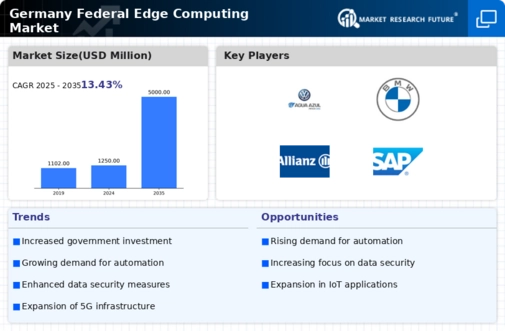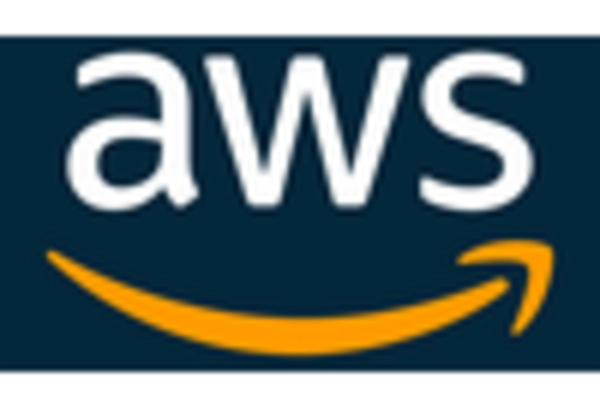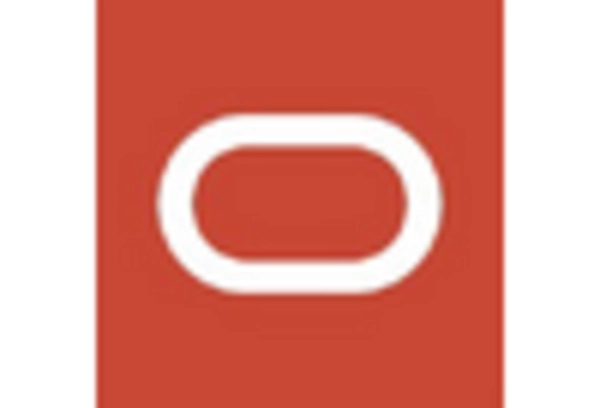Enhanced Security Requirements
Security concerns are paramount in the federal edge-computing market, particularly in Germany, where data protection regulations are stringent. The rise in cyber threats necessitates robust security measures, prompting government agencies to adopt edge computing solutions that offer enhanced security features. By processing data closer to its source, agencies can minimize vulnerabilities associated with data transmission. The federal edge-computing market is likely to benefit from investments in advanced security protocols, which are expected to account for a significant portion of the overall market expenditure, potentially reaching €1 billion by 2026. This focus on security is essential for maintaining public trust and ensuring compliance with regulatory standards.
Support for Smart City Initiatives
The push for smart city initiatives in Germany is significantly influencing the federal edge-computing market. As urban areas become more interconnected, the need for efficient data management and processing at the edge becomes increasingly apparent. Government agencies are investing in edge computing solutions to support infrastructure development, traffic management, and public safety systems. The federal edge-computing market is expected to see a rise in demand for solutions that facilitate real-time data sharing among various city services. This trend could lead to a market expansion valued at approximately €500 million by 2028, reflecting the growing importance of smart technologies in urban planning.
Integration of Artificial Intelligence
The integration of artificial intelligence (AI) technologies into the federal edge-computing market is transforming how data is analyzed and utilized. AI enables predictive analytics and automated decision-making, which are increasingly vital for government operations. In Germany, agencies are leveraging AI to enhance situational awareness and improve service delivery. The federal edge-computing market is projected to see a substantial increase in AI-driven applications, with estimates suggesting that AI could contribute to a market growth of over 30% by 2027. This integration not only streamlines processes but also enhances the overall effectiveness of government initiatives.
Regulatory Compliance and Standardization
Regulatory compliance is a critical driver in the federal edge-computing market, particularly in the context of Germany's stringent data protection laws. Government agencies are compelled to adopt edge computing solutions that align with these regulations, ensuring that data is processed and stored in compliance with legal standards. This necessity for compliance is likely to drive investments in edge computing technologies, as agencies seek to mitigate risks associated with non-compliance. The federal edge-computing market may witness a growth trajectory influenced by the establishment of standardized protocols, which could enhance interoperability and facilitate smoother implementation of edge solutions across various government sectors.
Rising Demand for Real-Time Data Processing
The federal edge-computing market is experiencing a notable surge in demand for real-time data processing capabilities. This trend is driven by the increasing need for immediate insights in various sectors, including defense, public safety, and healthcare. As government agencies in Germany seek to enhance operational efficiency, the ability to process data at the edge becomes crucial. Reports indicate that the market for edge computing solutions is projected to grow at a CAGR of approximately 25% over the next five years. This growth reflects the urgency for timely decision-making and the optimization of resources, thereby propelling the federal edge-computing market forward.

















Leave a Comment